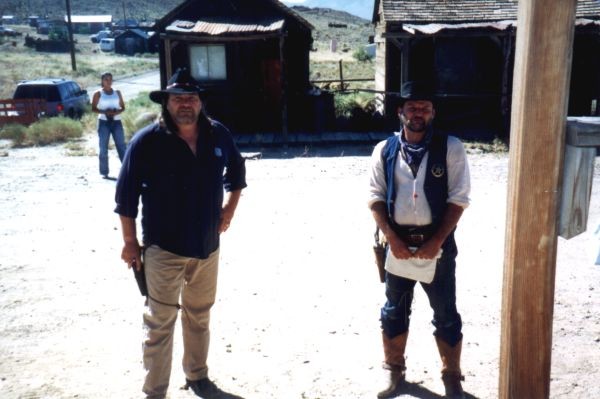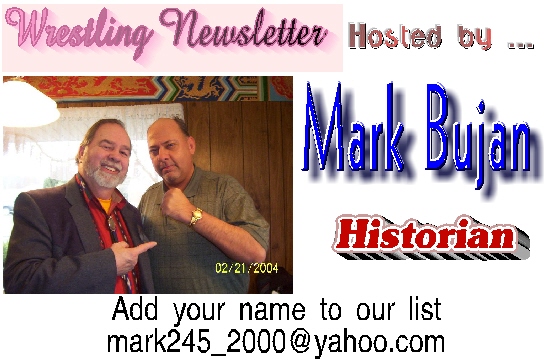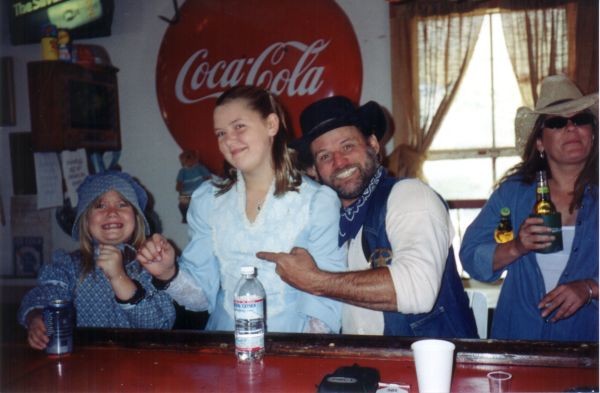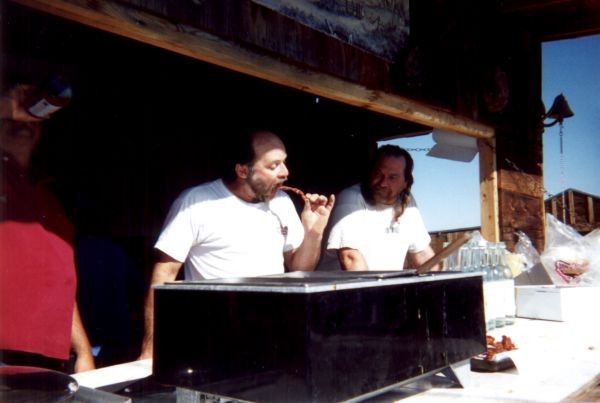|
In my many travels across the great depth of these lands that are part of the United States, I have made it a challenge to visit out of the way places. Old mining towns of the great West like Rhyolite, Nevada; Goldfield, Nevada or Midas, Nevada in the north central part of that state. Bannock, Montana was another, along with some of the enchanting places that made up the original 49er's area in California like Red Dog and You Bet.
This year, I am going to make it a promise to myself to venture north out of Las Vegas, while there for the annual CAC reunion, to go to yet another of my dream trips, Gold Point, Nevada. It will be, in another decade, ready to celebrate it's sesquicentennial year.
The area that would become Gold Point, one of Nevada's best ghost towns, was first settled by ranchers and a few miners during 1868. A small camp was formed a few hundred yards west of the present day town at an outcropping of limestone that was called Lime Point.
Life in those times was very hard, as the Native American people that had inhabited the land were very much against giving up their scenic beauty for the riches that were below the ground level. Many battles were fought until a friendship between both parties was settled and life became very much a part of solitude and peace.
When new discoveries of gold and silver established the major mining towns of Tonopah and Goldfield, Nevada to the north in the early 1900’s, a flood of prospectors returned to the old Lime Point mining camp. In 1902, silver was discovered in the area, and, in no time, the old camp was revived and renamed Hornsilver for a particularly rich source of silver ore.
At this time, the scarcity of water in the area required that the ore be shipped to nearby Lida for milling. The only major supply town was about 250 miles north at a town called Unionville, a major mining town northeast of present day Lovelock. When the miners didn’t find silver in the abundance that they had hoped for, the costs of shipping the ore to Lida became too high-priced, and, within a year, the early settlement was abandoned, in 1905, the Great Western Mine Company began operations about a half mile southeast of Hornsilver and before long, discovered a rich silver vein which brought a stampede of miners back to the camp. In addition to the rich silver ore, gold was also mined in small quantities. By 1908, the tent homes turned into more permanent wooden structures, and the camp became a town.
In May 1908, the Hornsilver Herald began publication, and, the following week, a post office was established. Before long, the residents organized a Chamber of Commerce, and numerous businesses sprouted up, including as many as 13 saloons. The Chamber began to actively pursue a railroad extension to Hornsilver. This, sadly, never happened. The nearest railroad depot was at Ralston, now just west and beyond the borders of Nellis Air Force Base, which was about 15 miles east of Hornsilver. As deep ore bodies were extensively developed, the town peaked at a population of around 1,000 with over 225 wood-framed buildings, tents and shacks throughout the camp.
In 1927, a miner by the name of J.W. Dunfee went down the mine and made an even better discovery - GOLD! Within a few years, more gold than silver was being mined, and the town’s name was changed to Gold Point. It was after this discovery that Gold Point enjoyed its longest period of success, at a time that the rest of America was suffering from depression.
However, when World War II began, mining resources were severely restricted to those mines extracting strategic metals. This resulted in gold mining efforts coming to a standstill in Gold Point. And, once again, most of its residents drifted away or went off to war. After the war, mining resumed on a smaller scale and continued until the 1960’s until a cave-in occurred from a dynamite blast at the Dunfee Shaft. More expensive to fix than the quantity and value of ore extracted would pay, the mine was closed.

Sheriff Stone and one of his deputies that guard the artifacts and visitors to Gold Point. They stage gunfights in the main street and have a lot of fun with visitors, making your stay an enjoyable one. Remember that when you visit any ghost town ... "take only pictures and leave only footprints."
After the closing of the Great Western Mine, the town officially became a "ghost" but was watched over by a long time resident named Ora May Wiley and the few remaining residents. Ora came to Gold Point around 1930 and married Harry Wiley, one of the founding fathers of Hornsilver. Staying until her death at the age of 83 in 1980, Ora ran the Post Office from 1940 until 1967. The couple also operated a general store and Standard Gas Station. Harry Wiley served on the Esmeralda County Board of Supervisors from 1940 until he was elected to the Nevada State Senate in 1946, where he served until his death in office in 1955. In 1967, the post office closed forever but now stands as a testament to this once flourishing town, seemingly frozen in time.
The old camp is a living history lesson with about 50 buildings still standing, including former Senator Harry Wiley's home and the post office that now serves as a museum. The Post Office Museum is open on most weekends and for large parties. Memorial Day Weekend is the annual Chili Cook-Off with loads of prizes & drawings, food & drink, games for all ages, and live music all day and through the night.
For a few days of the year, the population soars to 400, but, usually, it’s seven. Gold Point is home to the High Desert Drifters Western Historical Society, and the club routinely performs western reenactment and gunfights in the plaza. Guest services are available year round, including electric hook-ups for RV's. One can take a guided tour of the town and mill site or explore on your own the remains of as many as 16 old mining camps and hundreds of mines within a short drive. Nearby nature sites include waterfalls and watering holes frequented by wild horses and burrows, Indian petroglyphs, fossils, petrified woods, and a breathtaking view of Death Valley National Park from Big Molly.
Gold Point is owned for the most part by Sheriff Stone (Herb Robbins) and a few other private citizens. The town is called home to only about a dozen residents, who have privately restored and preserved the town. The old town has seen many needed repairs and improvements, all of which are due to the hard work of its few residents, friends and supporters.
Many of the cabins in the town appear as they did nearly 100 years ago and are sometimes rented out in a bed and breakfast fashion. The centerpiece of Gold Point is its 110-foot-long saloon, lined with historical artifacts on the outside, and boasting a Player Piano and shuffle board on the inside. The saloon, along with the post office and several other restored buildings, line its tiny historic main street.
On Memorial Day, Independence Day, and Labor Day weekends, Gold Point “opens its doors” to welcome hundreds of people for festive weekends including all kinds of food and activities. Herb Robbins portrays “Sheriff Stone” on these weekends entertaining the many guests and corralling the rowdies.
When you visit, keep in mind that the entire town is privately owned, and, though you may not see its few residents, rest assured that they watch over their property, keeping a close eye on visitors to ensure that its many artifacts remain exactly where they are.
During its heyday, Gold Point produced more than a million dollars in gold and silver, with the Great Western Mine extracting more than $500,000 in gold.
Gold Point is about 175 miles north and west of Las Vegas and 40 miles southwest of Goldfield off of Highway 95 at the junction where the famous "Cottontail Ranch" is (an exclusive gentleman's R&R stop). Turn west onto NV 266, then south onto Lida Road and onto the dirt road to arrive at Gold Point.
I am looking forward to meeting the Sheriff and learning more about this part of our history. If you care to see more of what makes the town a place I look anxiously to visit, please go to www.goldpointghosttown.com, and make sure that you visit the general store. It has a lot of unique stuff you can add to your collections.
When you do ... please tell them I sent you.
Percival A. Friend,
Retired
The Epitome of Wrestling Managers
2003 BWC Hall of Fame Inductee
2004 CAC Hall of Fame Inductee
2006 LWA Hall of Fame Inductee
2007 TCCW Hall of Fame Honoree
|




